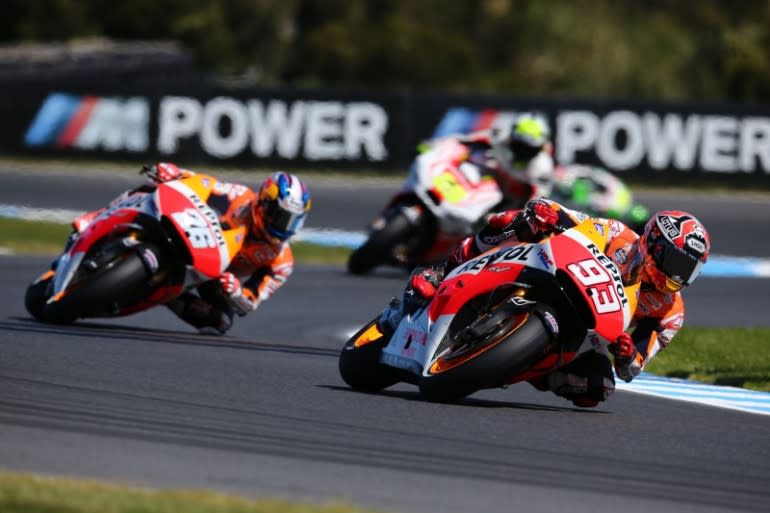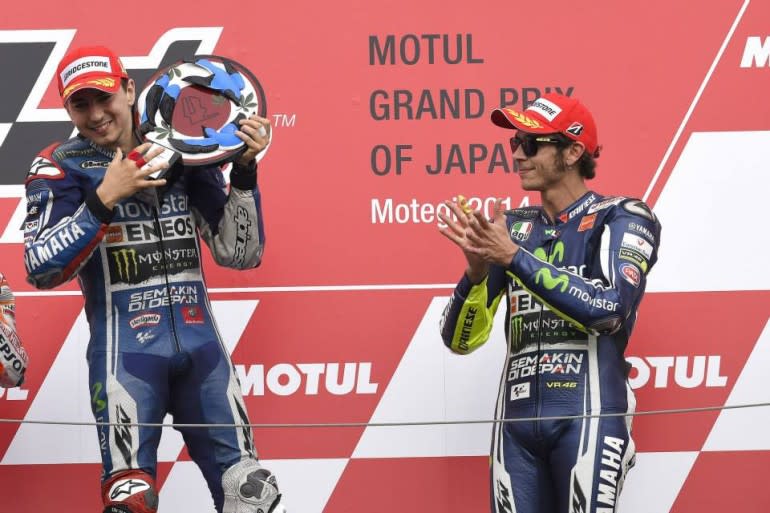Racing Against Your Teammate or With Him - The Trouble with Teammates, Part 2
Teammates are a part of modern racing as familiar as checkered flags and champagne on the podiums. But they represent an odd system in what is, in reality, an individual sport. In Part 1, we discussed the illustrations of the impact of teammates from the 2014 season, from the perspective of the lead rider.
So what if you're the second rider? Things get decidedly more murky. You may start the season on equal footing with your teammate, but as the rounds wear on, you may find yourself with an underdeveloped bike, less optimal tire choices, and in the worst case, team orders instructing you where to finish. Or, as in the case of Dani Pedrosa, you may be continually paired with riders who are just a little better than you, spoiling your otherwise very good chances at a world title. No one disputes that Pedrosa is one of the few riders in Grand Prix racing capable of challenging for wins, but he has had the rotten luck of riding against teammates like Nicky Hayden, Casey Stoner and Marc Marquez, who together account for five of the last nine MotoGP championships.
READ MORE: The Trouble with Teammates, Part 1 | RideApart
Another case study of teammates in motorcycle racing can be found with the Yamaha MotoGP team. No one disputes that Colin Edwards, in his prime, was a rider capable of fighting for wins, but it is well known that he was seldom given equal equipment to Valentino Rossi, then Yamaha's only darling. True, Edwards was never going to be equal to Rossi, but we're left wondering how much closer he could have been. With the arrival of Jorge Lorenzo, Yamaha was forced to supply two more-or-less equal bikes, in an effort to develop a more balanced machine for the manufacturers' championship, as well as a bid to preserve their future as Rossi edged closer to retirement. But Rossi didn't take the insider competition well, and eventually took his ball and went to Ducati.

Pedrosa (26) chasing Marquez (93). As he has been chasing his teammate since he entered the series. (Photo courtesy Honda Racing Corporation.)
In the interim, Lorenzo was joined by Ben Spies, arguably the strongest American talent to hit the world stage since Rainey and Schwantz. Spies backed up his strong rookie performance with the satellite Tech 3 team by taking his first win and a few podiums in 2011 en route to a fifth place finish in the championship, only to have things fall apart, sometimes literally, in 2012. Spies' bikes suddenly became plagued with a variety of bizarre mechanical problems, including blown engines, defective brakes, and failed suspension linkages. The season, and the injuries he sustained from it, would eventually lead to Spies's premature retirement from the sport. How it was that Lorenzo, who would go on to win the championship that year, was supplied with bikes seemingly immune from the same sort of defects, has never been revealed by the few in the paddock who know. But the contrast in performance, though often no fault of Spies, surely contributed to his dismissal from the team.
READ MORE: How To: Fix 5 Common Bike Problems | RideApart
One of the main theoretical advantages of a two-rider team is the development of the motorcycle. If two heads are better than one, then certainly the data and input of two riders over the course of a season will develop a superior machine. But that remains true only so long as the riders have similar enough riding styles. Otherwise, the input can be conflicting and sometimes counterproductive. This may have been one of the biggest problems plaguing Ducati's MotoGP program for the past several years, as the litany of riders (and riding styles) cycling through the team provided inconsistent feedback for the development of the bike. Then again, it didn't help that what feedback they did receive was often ignored by Ducati's engineers.
Years ago, it was explained to me in private conversation that the main factor in the disparity in performance between two factory riders in the AMA paddock was that the team had decided to follow the lead rider's direction with development and setup. This was a reasonable decision by the team, but the second rider had a much different style, and was never able to adapt to the bike as it evolved further away from his preferences. This may have been excuse-making, but there is a kernel of truth to it as well.


 Yahoo Autos
Yahoo Autos 
